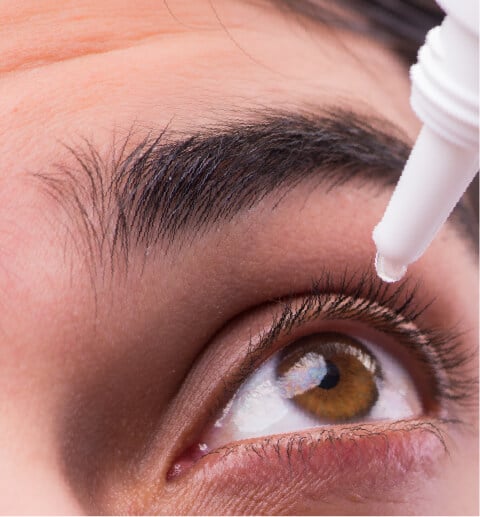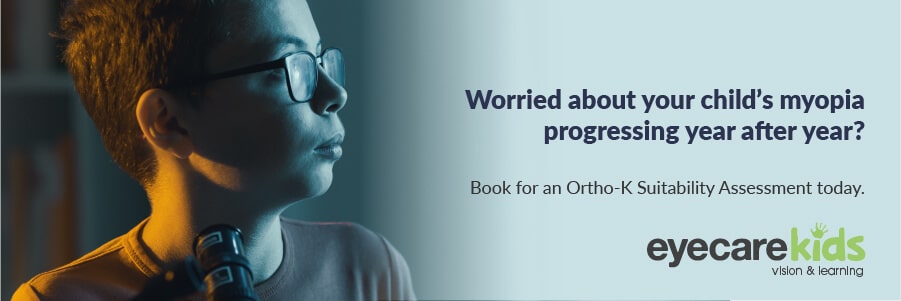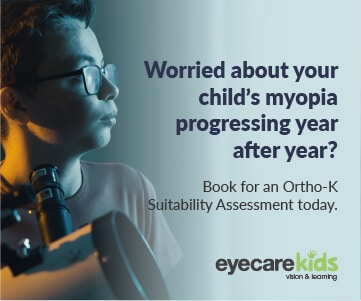A 2-year randomized clinical trial was conducted by the Hong Kong Polytechnic University’s School of Optometry, the University of Hong Kong’s Department of Ophthalmology and the Hong Kong Laser Eye Centre in Hong Kong, China. A combination of 0.01% atropine and Ortho-K was used to determine its effects on childhood myopia. The result was promising.
 First, let’s discuss how atropine and Ortho-K works in myopia control.
First, let’s discuss how atropine and Ortho-K works in myopia control.
Myopia occurs when the eyeball does not stop growing and becomes more elongated or when the cornea is too curved. Atropine, a muscle relaxant, slows eye growth. Low doses are advised so that it does not hinder reading vision compared to higher doses which cause blurry vision. Meanwhile, Ortho-K (orthokeratology) lenses are “nighttime contact lenses” which gently reshape the front of the eye whilst the wearer sleeps and are taken off in the morning. Ortho-K is one of the most recommended evidence-based treatment options for childhood myopia progression.
Summary of the clinical trial
Chinese children aged 6 to less than 11 years wore Ortho-K for two years, with half randomized to also receive 0.01% atropine nightly. Axial length was measured at six-monthly intervals. Pupil size and choroidal thickness was also measured to investigate potential mechanisms for different outcomes between the groups.
The results?
The children undergoing atropine plus Ortho-K (AOK) treatment showed 0.17mm axial growth over two years, compared to 0.34mm in the OK only group. This represents 50% slower growth, and an average overall growth of less than 0.1mm per year in AOK treated children.
Interestingly, the largest growth difference between the groups occurred in the first six months, with the AOK group showing -0.02 ± 0.10mm growth (mean axial shortening, partly due to choroidal thickening) while the OK group showed 0.07 ± 0.08mm growth. From 6 to 12 months and 18 to 24 months there were no differences in growth rate between the groups. From 12 to 18 months, there was 0.04mm in the AOK versus 0.08mm growth in the OK group. This indicates that most of the treatment effect occurred during the first six months, with these early gains being maintained over the full 24 month treatment duration.
Pupil size increased by around 0.5mm in photopic and mesopic conditions for the AOK children. Amplitude of accommodation was not affected. In the AOK group, 13% of children noted photophobia (reported as “well tolerated without complaints of causing inconvenience”) but none of the OK group did. There were no differences between groups in other symptoms like blurred vision, halo, dry eye or adverse events which were of a low rate and none of which were serious.
Choroidal thickness increased in the AOK group from 1 month, and the difference between AOK and OK groups increased from 10 to 32µm over the study. The authors postulated this as a potential mechanism of the additive efficacy, although an increase in ocular higher-order aberrations due to enlarged pupils is another possible mechanism.
Self-reported compliance with ortho-k wear was 93%, and it was also 93% for atropine eye drops, which was measured by the empty single-use preservative free vials which were brought back to the examiners.
Conclusions: Slower axial elongation following 2-year AOK treatment may result from increased pupil dilation and a thickening in the choroid observed in the AOK group.
For a more complete scientific reading and the list of references, refer to this post.


